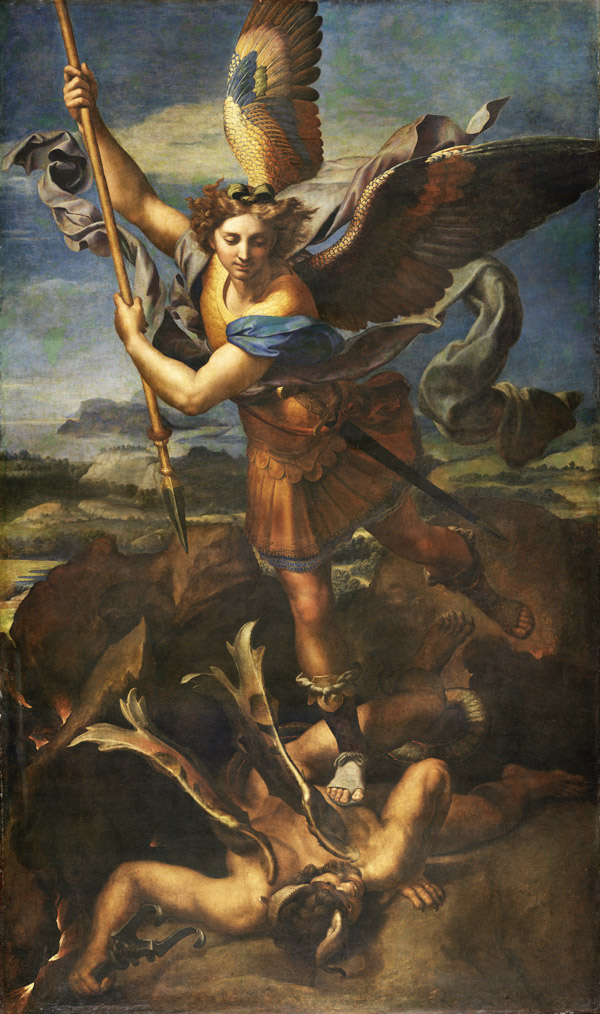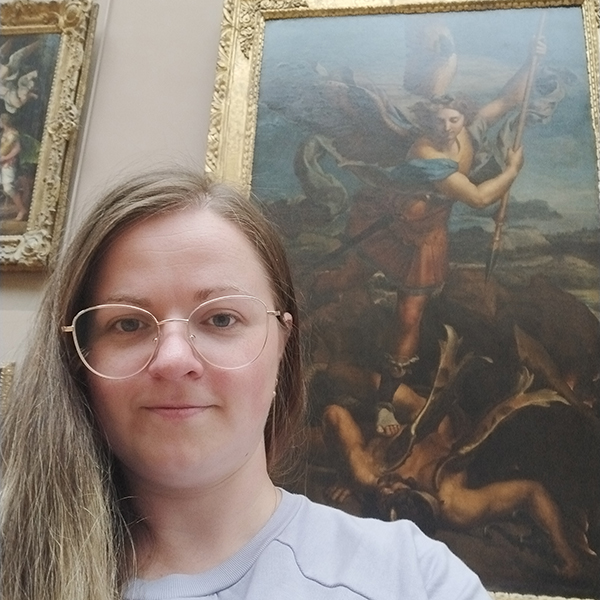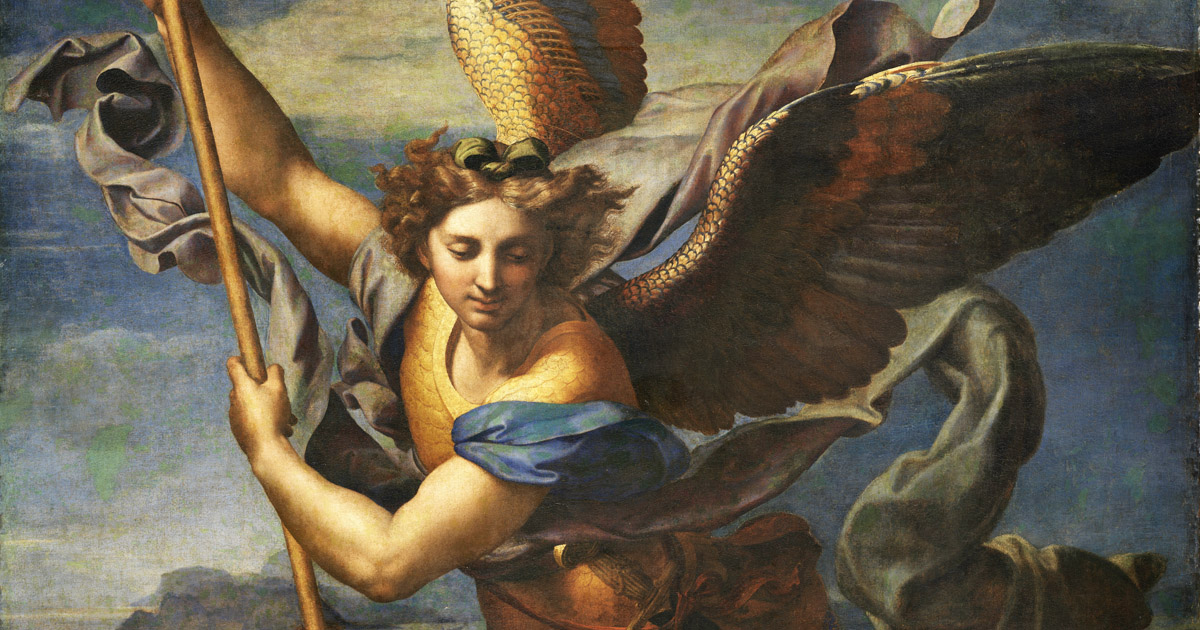Saint Michael Vanquishing Satan — Raphael
Title of the painting: Saint Michael Vanquishing Satan
Author: Raphael (Raffaello Sanzio) (1483–1520)
Country: Italy
Year of creation: 1518
Technique: Oil (mostly from panel; transferred to canvas in the 18th century)
Dimensions: 268 × 160–161 cm
Exhibition location: Louvre, Grande Galerie, room ~712
Category: Mythological / religious composition, heroic portrait
Style / School: High Renaissance (the “Rome of Raphael” period)

Context of Creation
In 1518, Raphael received a commission from Pope Leo X as a diplomatic gift for France — in particular, to mark the marriage of Lorenzo de’ Medici (the pope’s nephew) to Madeleine de La Tour d’Auvergne. Thus the canvas became an official symbol of the alliance between church and crown. Some scholars note that his pupil Giulio Romano may have worked on the painting, responsible for deepening the tonalities (especially the blacks) to heighten the scene’s drama.
Subject and Composition
The painting presents a divine scene: the Archangel Michael, in gleaming classical armour, stands upon the shoulder of the vanquished demon, poised to deliver the decisive blow with his spear. The angel’s open stance, wind-swept cloak, and sweeping wings convey a sense of restrained motion. The background — dark rocks and burning infernal ground — contrasts with the clear, airy sky, adding depth to the composition. The compositional line from the spear to the demon draws the viewer’s gaze to the central moment — the true climax of the struggle between good and evil.
Style and Technique
Raphael drew on elements of classical antiquity — the heroic figure of Michael, the harmonious disposition of bodies, the serene expression set against surrounding drama. The original palette’s transformations were complemented by metallic golden and warm tones that lent the paints a “metallic” effect. The work is marked by precise anatomy and a distilled classical grandeur that would become influential for French classicism in the 17th century.
The Painting’s Fate
After its creation, the painting entered the French royal collection (Louis XIV) and, since 1667, has been exhibited within the Louvre’s holdings. It underwent restorations: in the 1530s (under Le Primatice), in 1685, and in the 1750s it was transferred to canvas to stabilise its condition.
Personal View

Standing before Michael’s majestic figure, you feel a rational strength and unwavering faith that Raphael conveys through calm and motion at once. What struck me most was the serenity of his face — he is not fighting; he is simply fulfilling his mission. The demon trembles, the earth burns, the sky shines — and at the centre of it all are harmony, beauty, and sanctity.

